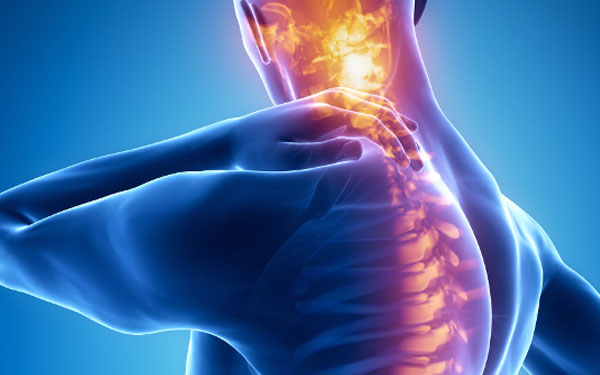Neuropathic pain, a complex and chronic pain condition resulting from nerve damage or dysfunction, presents a significant challenge to both patients and healthcare providers. Recent advancements in medical research have paved the way for innovative treatments and techniques aimed at alleviating this debilitating condition. This article explores the latest advances and techniques in neuropathic pain relief, providing a comprehensive overview of emerging therapies that offer hope to those affected by this condition.
Understanding Neuropathic Pain
Neuropathic pain is characterized by symptoms such as burning, stabbing, or shooting pain, often accompanied by tingling or numbness. It can result from various causes, including diabetes, chemotherapy, infections, and physical injuries. Unlike nociceptive pain, which is caused by tissue damage, neuropathic pain stems from abnormalities in the nervous system, making it notoriously difficult to treat.
Pharmacological Advances
Novel Medications
Recent years have seen the development of novel medications specifically targeting neuropathic pain pathways. These include:
- Sodium Channel Blockers: Medications such as lacosamide and carbamazepine target sodium channels in nerve cells, reducing the transmission of pain signals.
- Calcium Channel Alpha-2-Delta Ligands: Pregabalin and gabapentin modulate calcium channels, thereby decreasing neurotransmitter release and pain transmission.
- Serotonin-Norepinephrine Reuptake Inhibitors (SNRIs): Duloxetine and venlafaxine increase the levels of serotonin and norepinephrine, which play a crucial role in pain modulation.
Topical Treatments
Topical treatments offer localized pain relief with fewer systemic side effects. Lidocaine patches and capsaicin creams have proven effective in managing localized neuropathic pain, particularly in conditions such as postherpetic neuralgia.
Non-Pharmacological Techniques
Neuromodulation
Neuromodulation techniques involve the alteration of nerve activity through electrical stimulation. Spinal cord stimulation (SCS) and peripheral nerve stimulation (PNS) have shown promising results in reducing neuropathic pain by interfering with pain signal transmission.
- Spinal Cord Stimulation (SCS): SCS devices deliver electrical impulses to the spinal cord, disrupting pain signals and providing relief. Advances in SCS technology have led to the development of high-frequency and burst stimulation modes, offering better pain control and patient satisfaction.
- Peripheral Nerve Stimulation (PNS): PNS involves the placement of electrodes near peripheral nerves to modulate pain signals. It is particularly effective in cases of localized neuropathic pain, such as complex regional pain syndrome (CRPS).
Transcranial Magnetic Stimulation (TMS)
TMS is a non-invasive technique that uses magnetic fields to stimulate nerve cells in the brain. It has been found to reduce neuropathic pain by modulating the central nervous system’s pain pathways. Repetitive TMS (rTMS) has emerged as a promising option for patients who do not respond to conventional treatments.
Complementary and Integrative Therapies
Acupuncture
Acupuncture, an ancient Chinese practice, involves the insertion of fine needles into specific points on the body to stimulate nerve pathways and promote pain relief. Recent studies have demonstrated the efficacy of acupuncture in reducing neuropathic pain, particularly in conditions such as diabetic neuropathy and chemotherapy-induced neuropathy.
Physical Therapy and Rehabilitation
Physical therapy plays a crucial role in managing neuropathic pain. Techniques such as desensitization therapy, manual therapy, and graded motor imagery help in reducing pain and improving function. Exercise programs tailored to individual needs can enhance mobility and overall quality of life.
Mind-Body Interventions
Mind-body interventions, including cognitive-behavioral therapy (CBT), mindfulness meditation, and biofeedback, have been shown to reduce the perception of pain and improve coping mechanisms. These therapies address the psychological aspects of chronic pain, providing a holistic approach to pain management.
Emerging Therapies and Future Directions
Gene Therapy
Gene therapy is an emerging field that holds promise for neuropathic pain relief. By targeting specific genes involved in pain signaling pathways, researchers aim to develop treatments that provide long-term relief. Early-stage clinical trials have shown encouraging results, indicating the potential for gene therapy to revolutionize neuropathic pain management.
Stem Cell Therapy
Stem cell therapy involves the use of stem cells to repair damaged nerves and restore normal function. Research in this area is ongoing, with studies demonstrating the potential of stem cells to promote nerve regeneration and alleviate pain. While still in the experimental stage, stem cell therapy represents a promising avenue for future treatment.
Cannabinoids
Cannabinoids, compounds found in cannabis, have gained attention for their analgesic properties. CBD (cannabidiol) and THC (tetrahydrocannabinol) interact with the endocannabinoid system, which plays a role in pain modulation. Clinical trials have shown that cannabinoids can provide significant relief for neuropathic pain, making them a potential option for patients who have not found relief with traditional treatments.
Patient-Centered Approaches
Personalized Medicine
The concept of personalized medicine involves tailoring treatments to individual patients based on their genetic makeup, lifestyle, and specific pain conditions. Advances in genetic research and biomarker identification are paving the way for more personalized approaches to neuropathic pain management, improving treatment efficacy and patient outcomes.
Multidisciplinary Pain Management
A multidisciplinary approach to pain management involves a team of healthcare professionals, including neurologists, pain specialists, physical therapists, and psychologists, working together to provide comprehensive care. This approach ensures that all aspects of a patient’s condition are addressed, leading to better pain control and overall well-being.
Conclusion
The landscape of neuropathic pain relief is rapidly evolving, with numerous advances and techniques offering new hope to those affected by this challenging condition. From novel pharmacological treatments to innovative non-pharmacological therapies and emerging fields like gene and stem cell therapy, the future of neuropathic pain management looks promising. By staying informed about the latest developments and adopting a multidisciplinary, patient-centered approach, we can enhance the quality of life for individuals living with neuropathic pain.

